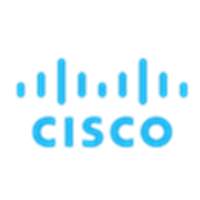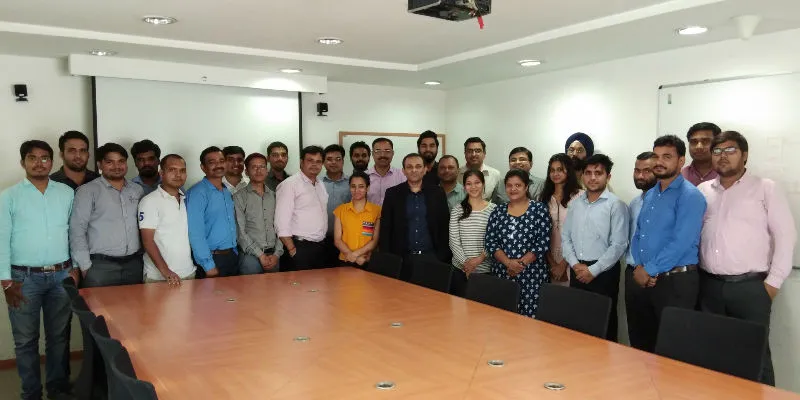
Cisco
View Brand PublisherSafexpress’ technology transformation journey and how it is impacting everything from employee productivity to negotiating contracts
In April 2018, Safexpress, India’s largest logistics and supply chain company in terms of network, launched its ultramodern, 30,000 sq ft park in Hubli, Karnataka, enabled with modern transhipment and third-party logistics (3PL) facilities and a robust IT system to increase operational efficiencies and inventory visibility. This Logistics Park is one of 32 such state-of-the-art warehouses, with a combined space of over 13 million sq ft, it has set up.

Through a network of over 50 such hubs, today Safexpress delivers more that 80 million packages a year, traversing over 6,00,000 km, plying through 1,100 routes, covering 622 destinations across the country in 6000+ GPS-enabled all weather-proof containerised vehicles.
Technology – integral to Safexpress’ growth
Indeed the firm has come a long way since 1997, when it began as a small logistics company with B2C and B2B offerings. With the growth of the business, Safexpress strategically focused on capitalising on its B2B offerings and crafted unique B2C offerings such as Campus2Home for graduating students, Easy2Move for SMEs and individuals with smaller loads, Sainik Express – a specialised baggage delivery services for soldiers and SafeReturns to cater to the needs of those participating in exhibitions and expos. But, it is its offerings for enterprises that are its key growth drivers.
Safexpress’ well-designed B2B supply chain solutions meet the needs of a range of industry verticals such as apparels and lifestyle, automotive, e-commerce, engineering, FMCG and consumer electronics, healthcare, hi-tech, institutional and others. These solutions include the Stock2Shelf service that determines the need at a retail store, assessing and delivering the stock at the feeder warehouses within the given timelines. This is especially successful in retail outlets operating out of mega malls where footfalls are high.
Technology is quintessential to Safexpress’ day-to-day operations. It has digitalised almost every aspect of its operations – from something as simple as an inhouse mobile app for employee travel to something as complex as using predictive analytics to manage its fleets and delivery more efficiently or the direct API integration for e-waybill with NIC. And, going the digital way, has helped to sustain its position as a market leader.
Creating a technology roadmap aligned with growth
In the initial years, Safexpress, as was the norm, relied on paper and people for efficient management of its process. And, in 2006, when Rubal Jain, the son of founder Pawan Jain, began actively participating in the company’s day-to-day operations, the technology adoption gained pace. Rubal is today the Managing Director with very strong leadership, business and strategic skills and is driving the business with key investments around technology to take the company through an accelerated growth trajectory.
The first brush with digitalisation happened when Safexpress invested in an bespoke ERP system in 2009. But, as the technology was later managed by a mix of inhouse and small third-party vendors, it remained static. With changes in the market dynamics and technology becoming symbiotic to business growth, in 2017 Safexpress put in a functional technology roadmap based around the 5 key pillars of CAMSS (Cloud, Analytics, Mobile, Social and Security) – for its digital transformation journey. “The objective was clear: digitise processes where in the transformation is almost instantaneous, but brings in long-term benefits for the business,” says Group Chief Information Officer and Digital Transformation leader Kapil Mahajan who has been instrumental in drafting and implementing the CAMSS roadmap at Safexpress.
Getting digitised – impact on people and processes

The first step saw the entire shipment process getting digitised and integrating it with the ERP, bringing down cost, increasing time efficiency and giving Safexpress last-mile visibility. Today, its larger hubs are equipped with Wi-Fi barcode scanners and related applications and interlinked to the in-house developed mobile app platform called PROSCAN. Digitisation has not only reduced human error but also helped adoption of bigger technology integrations. Today, with the pervasive digitisation everybody -- from the hub manager to the CIO -- gets clear visibility in the supply chain and the hub and can draw on insights on types of shipment, time taken for transit, etc. “This helps us take timely and apt decision for our business,” Kapil points out.
This also had an underlying impact on employment engagement. “Earlier, employees were given incentives and awards relying on the information of the Hub Manager. But today, it is validated through numbers as well. [We have] witnessed improvement in employee productivity by putting in benchmarks for each role, also an element of gamification. Incentives and awards are now given out based on how many items are scanned, loaded and other job-related relevant metrics,” he explains.
Sharing an example of how digitisation has positively impacted the business, he says, “All our scanners are connected to our IoT platform, so we are able to flag misrouted packets instantly and take necessary action. This has drastically brought down the number of misrouted packets in the system.”
Guided by the technology roadmap
The larger technology transformation began with Safexpress picking key business processes under each pillar of the CAMSS roadmap and working on it. Mapping the business need saw it onboarding a service-oriented cloud platform and applications suite that provides next-generation enterprise technologies, applications, and services. Kapil says, “We were in fact the first in the industry to onboard such a cloud platform for our financial ERP and set the precedent.” Explaining how it has reaped benefits, the CIO says, “Today, we continue to focus on our core business and strengths, fuel further growth, instead of spending significant amount of time, effort and money on managing hardware infrastructure and software platform upgrades. Onboarding the right technology and strategically vetted technology partners has helped to accelerate our productivity.”
One such technology which played a transformative role for Safexpress is Cisco Meraki – a cloud-controlled WiFi, SD WAN, routing and security technology.
This brought multiple dividends such as improved network speed and cutting down delays. With Meraki, Safexpress could now define what were the core applications and what time of the day they want the applications to get maximum bandwidth, particularly late night and early mornings, which are “the most action-packed periods of the day” thus optimizing the MPLS bandwidth cost but enhancing the application performance and throughputs.
Safexpress introduced the SD WAN technology using Cisco Meraki in October 2017 in its Delhi Hub and, quickly realising the benefits, plans to integrate it in all its 50 hubs. Today, Meraki is arterial to its infrastructure and network technology transformation journey.
Formulating and evolving the ERP to stay relevant to business needs
The way a supply and logistics chain operates is complex. There is a fixed schedule for departure and arrival based on which the plan is often formulated. For instance, if the goods have to go from Delhi to Ajmer, they might not go directly but could first go to a consolidation centre in that route and thence to Ajmer to allow maximum allocation of resources without compromising on the overall delivery SLA. The schedule adheres to Safexpress network design, which has been formulated incorporating learnings from years of experience running the business.

Says Kapil, “So this network logic has been built into our core ERP business layer and over the last few months a lot has been done to restructure the core to bring it to a standard reference architecture and allow accelerated business adaptability while we embark on a journey to revamp to a new microservices based architecture that will leverage DevOps and CI/CD capabilities”
The CIO shares how the new flexible contract provisioning in the ERP along with analytics is helping Safexpress. “The pricing of deals today in the B2B space is very complex and customized to suit the needs of each company and until the ERP has the architectural capability to handle such degrees of variations it creates a bottleneck for the sales and impedes the customer accusation and growth. Also combining this with advanced analytics gives us the capability to monitor the contracts and provide insight and predication with respect to when a contract will possible switch from positive to a negative yield calling for a proactive rate revision or a dialogue with the customer.
Why IoT is great for logistics and supply chain
Safexpress has also built an in-house platform called ‘HOG - HUB on the GO’, that enables it to optimise labour and hub performance by enabling faster loading and unloading of vehicles. The platform is built on top of an IoT platform to connect with wireless barcode scanners and readers enabling performance tracking and visibility, proactive monitoring, and enhanced floor planning for faster shipment.”
All it vehicles are GPS-enabled and linked to screens that display the arrival and departure information, similar to the ones at airports. The Operation Assistant floor performance dashboard shows number of packets scanned by an individual and his overall ranking for the day and week. These and other real-time widgets have played a big role in enabling Safexpress continually enhance its performance and efficiency, leading to better SLA’s across their key operations metrics.
Digitalising to go green
Safexpress has also designed and developed in-house mobile enterprises app called ‘Green App’, which has an array of business and employee widgets centred around productivity and optimisation. “The reason why it is called [so] is because it has helped to reduce our carbon footprint by digitising our businesses processes that were paper-reliant.”
Being future ready
To be future ready, Safexpress has set up an innovation lab where its technologists are working with Artificial Intelligence (AI) and Machine Learning (ML) solutions from Cisco, Google, Amazon and IBM on very interesting use cases ranging from weather data to image recognition in supply chain and logistics. It is also looking to launch a novel, in-house last-mile app integrated with AI capabilities and features such as real-time delivery updates, digital payment gateways, real-time proof of delivery and so on.
In short, the digital transformation roadmap at Safexpress has been designed to cover every leg of the journey – right from the first mile to the last mile -- while being able to adapt to the volatilities and dynamics of the market.
As Kapil says, “Even though it’s just been a little over a year since our on-ground personnel have begun using Wi-Fi-enabled scanners and barcode readers, they say they cannot imagine going back to tedious manual processes. This is an indicator of how deep technology is embedded in the DNA of the company today.”







